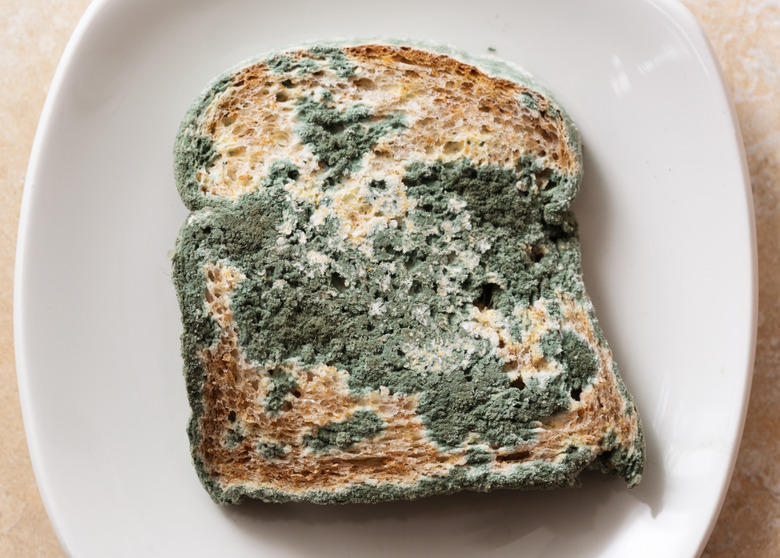Does Mold Grow Faster In The Light Or Dark?
Mold belongs to the kingdom Fungi along with delicious edible mushrooms and yeast, which is used to rise bread. Fungi are also important decomposers in ecosystems as they eat dead or decaying animal, plant and other organic matter. To reproduce, fungi spread spores, in a similar way to plants spreading pollen or seeds.
Mold spores typically like hot, dark and moist environments to grow fast. Sometimes when these spores are inhaled, they are harmful to humans and other animals as they cause an inflammatory reaction in the body, as in the case of toxic mold, which is why it is important to prevent mold growth in buildings and pet enclosures.
Mold Growth Conditions
Mold Growth Conditions
Many different species of mold exist, each of which prefers slightly different environments for growth. However, all mold requires four key conditions for growth. First, there must be mold spores in the area. No spores – no mold.
Second, the mold spores must have a source of food to grow on. Mold can grow on a variety of household substances, from rotting fruit and vegetables to wooden panels or fabrics. Mold is sometimes found growing on inorganic substances like plastic or steel. When this happens, the mold is still feeding on an organic substance that is on its surface, such as the oil leftover from a person's fingerprints, organic fibers or residue from an organic cleaning substance.
Third, for mold to grow, the spores must have sufficient moisture in the environment. Finally, mold spores require an adequate temperature, usually the warmer the better. Removing one of these four mold growth conditions will prevent it from spreading.
How Fast Does Mold Grow?
How Fast Does Mold Grow?
Mold grows fastest when in the species' ideal environment. When all the conditions are right, spores can germinate and grow mold colonies on a surface in as little as 24 to 48 hours. As the colony grows it releases more spores which spread in the air and grow new colonies when they land on the right surface.
Identifying Mold Growth
Identifying Mold Growth
Mold grows in colonies. On most surfaces, mold colonies look like dark green, blue or black spots clumped together. However, mold like this can also appear pink or yellow. Mold growth on food is often green or grey with a fuzzy texture.
Does Mold Need Light?
Does Mold Need Light?
Light is not one of the key resources mold needs to grow. This is because, unlike plants, mold is not photosynthetic and doesn't use light to generate energy. In fact, light from the sun can inhibit mold growth and even kill it, so many molds thrive and grow better in dark environments.
The reason sunlight can damage and kill mold is that it contains ultraviolet (UV) radiation, which damages organisms' cellular functions. This is why UV light treatments are commonly used to help clean air in hospitals or decontaminate food and water sources. In houses increasing natural light indoors can help minimize mold growth due to the exposure to UV light and because sunlight helps dry areas, reducing the critical moisture component mold needs.
What Temperature Does Mold Grow?
What Temperature Does Mold Grow?
While mold typically prefers warm temperatures, some mold species can also grow in near-freezing conditions. Though mold can grow in very cold places, it will grow faster in warmer environments. Because of the wide temperature tolerance mold has it is difficult to use temperature to control its growth. For example, refrigerating and freezing food will help it stay fresher and last longer, but it won't prevent mold growth forever.
In What Humidity Does Mold Grow?
In What Humidity Does Mold Grow?
Typically mold likes a relative humidity of 70%. Mold's affinity for water is the reason blooms often occur after plumbing leaks or flooding events. Because mold likes a high-humidity environment, this is the easiest condition to control to minimize its growth indoors. Keeping areas well ventilated and using dehumidifiers helps reduce the relative humidity and reduce mold growth.
References
- Florida Solar Energy Center: Mold Growth
- National Institutes for Health: Applications of Ultraviolet Germicidal Irradiation Disinfection in Health Care Facilities: Effective Adjunct, but Not Standalone Technology
- United States Environmental Protection Agency: Mold Course Chapter 1
- Federal Emergency Management Agency: Dealing With Mold & Mildew in Your Flood Damaged Home
Cite This Article
MLA
Jerrett, Adrianne. "Does Mold Grow Faster In The Light Or Dark?" sciencing.com, https://www.sciencing.com/does-mold-grow-faster-in-the-light-or-dark-13420833/. 2 November 2021.
APA
Jerrett, Adrianne. (2021, November 2). Does Mold Grow Faster In The Light Or Dark?. sciencing.com. Retrieved from https://www.sciencing.com/does-mold-grow-faster-in-the-light-or-dark-13420833/
Chicago
Jerrett, Adrianne. Does Mold Grow Faster In The Light Or Dark? last modified August 30, 2022. https://www.sciencing.com/does-mold-grow-faster-in-the-light-or-dark-13420833/
